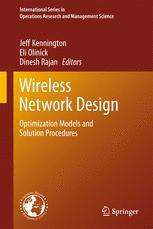

Most ebook files are in PDF format, so you can easily read them using various software such as Foxit Reader or directly on the Google Chrome browser.
Some ebook files are released by publishers in other formats such as .awz, .mobi, .epub, .fb2, etc. You may need to install specific software to read these formats on mobile/PC, such as Calibre.
Please read the tutorial at this link: https://ebookbell.com/faq
We offer FREE conversion to the popular formats you request; however, this may take some time. Therefore, right after payment, please email us, and we will try to provide the service as quickly as possible.
For some exceptional file formats or broken links (if any), please refrain from opening any disputes. Instead, email us first, and we will try to assist within a maximum of 6 hours.
EbookBell Team

5.0
100 reviewsThis book surveys state-of-the-art optimization modeling for design, analysis, and management of wireless networks, such as cellular and wireless local area networks (LANs), and the services they deliver. The past two decades have seen a tremendous growth in the deployment and use of wireless networks. The current-generation wireless systems can provide mobile users with high-speed data services at rates substantially higher than those of the previous generation. As a result, the demand for mobile information services with high reliability, fast response times, and ubiquitous connectivity continues to increase rapidly. The optimization of system performance has become critically important both in terms of practical utility and commercial viability, and presents a rich area for research.
In the editors' previous work on traditional wired networks, we have observed that designing low cost, survivable telecommunication networks involves extremely complicated processes. Commercial products available to help with this task typically have been based on simulation and/or proprietary heuristics. As demonstrated in this book, however, mathematical programming deserves a prominent place in the designer's toolkit. Convenient modeling languages and powerful optimization solvers have greatly facilitated the implementation of mathematical programming theory into the practice of commercial network design.
These points are equally relevant and applicable in today’s world of wireless network technology and design. But there are new issues as well: many wireless network design decisions, such as routing and facility/element location, must be dealt with in innovative ways that are unique and distinct from wired (fiber optic) networks. The book specifically treats the recent research and the use of modeling languages and network optimization techniques that are playing particularly important and distinctive roles in the wireless domain.